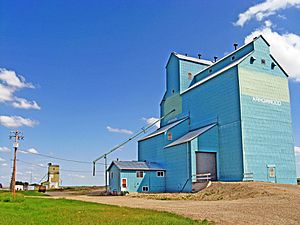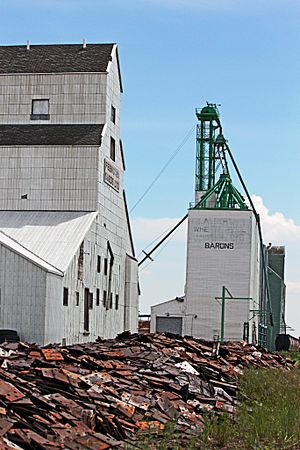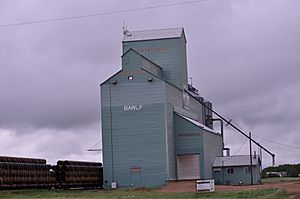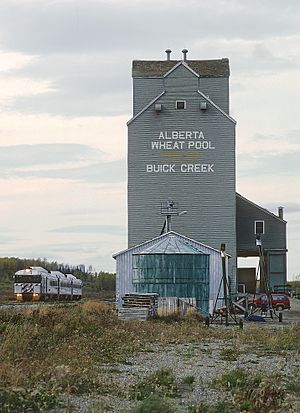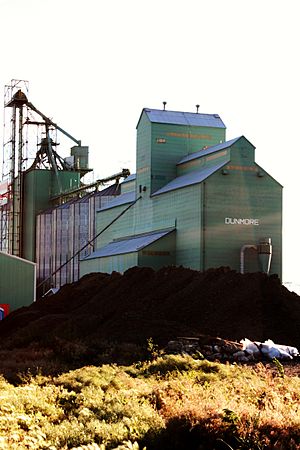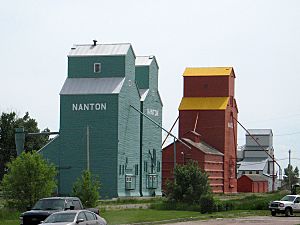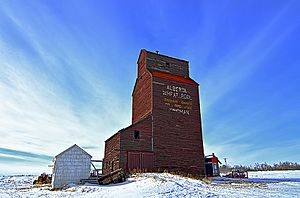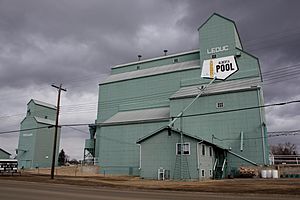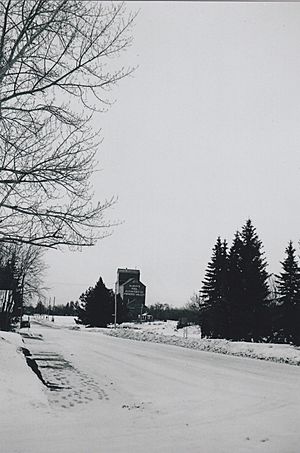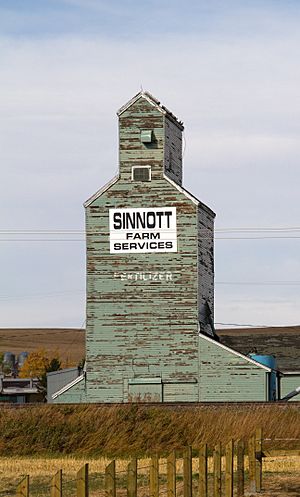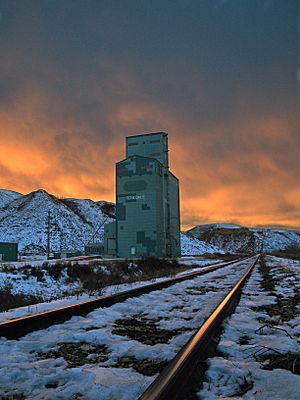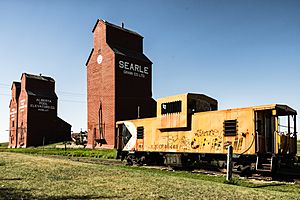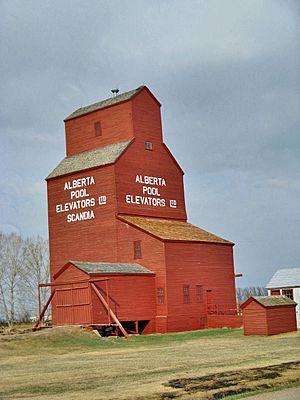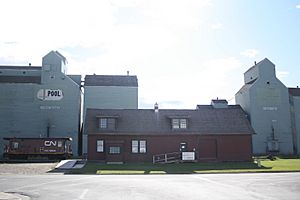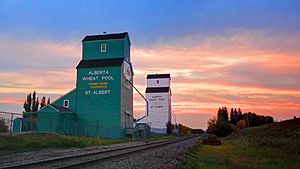Alberta Wheat Pool facts for kids
 |
|
| Industry | Agriculture |
|---|---|
| Fate | Merged |
| Successor | Agricore, Agricore United, Viterra |
| Founded | 1923 |
| Defunct | 1998 |
| Headquarters | Alberta, Canada |
| Products | Grain buying |
The Alberta Wheat Pool was a special group created in 1923. It was the first farmer-owned business in Canada that helped wheat farmers. Farmers worked together to sell their wheat for the best prices. It was a type of co-operative, meaning members shared in the profits.
Contents
History of the Alberta Wheat Pool
How the Pool Started
In 1923, farmers from the United Farmers of Alberta wanted a better way to sell their wheat. They met with a lawyer named Aaron Sapiro. He helped them create the Alberta Wheat Pool. This new group was non-profit. Its main goal was to sell wheat for the highest possible price.
Each farmer had one vote, no matter how much wheat they grew. To join, farmers signed a five-year contract. They promised to sell all their wheat through the Pool. This helped the Pool have a lot of wheat to sell.
At first, other companies like United Grain Growers helped the Pool. They let the Pool use their storage buildings. Soon, other elevator owners agreed too. They saw how much power the farmers had together.
The Pool bought wheat from its members at a starting price. Then, it sold the wheat. If there was extra money at the end of the year, it was shared among the members. Everyone got the same price for their wheat. About 26,000 farmers joined the Pool early on.
The Alberta Wheat Pool started selling wheat directly. They sold to flour mills and even exported grain. In their first year, over 60% of sales were direct. They also used the Winnipeg Commodity Exchange to manage risks. This helped them get loans from banks.
Building and Growing
After the first year, the Pool started saving money. They took 2 cents from each bushel of wheat sold. This money was used to buy or build their own grain elevators. This was a small cost, as wheat sold for over $1.00 a bushel.
With this money, the Pool saved $200,000. Soon after, other provinces like Saskatchewan and Manitoba started their own Wheat Pools. These Pools grew very large and became powerful.
By 1928, the combined Pools were huge businesses in Canada. They handled $323 million in sales. The Pool tried to buy United Grain Growers Ltd., but it didn't happen. Instead, the Wheat Pool built more elevators. By the late 1960s, they had 567 elevators.

Tough Times and World War II
In 1925, wheat prices went up, then dropped. The Pool worried that others were trying to lower prices. So, they bought a lot of wheat futures. This means they agreed to buy wheat at a set price later. This helped raise prices and made the Pool very profitable.
They tried this again in 1929 and 1930. The 1929 attempt worked well. But in 1930, prices crashed due to the stock market collapse. Wheat prices fell below 20 cents. The Pool lost a lot of money. They needed government loans to survive. It took 17 years to pay back these loans. To get the loans, the Pools had to stop selling grain directly overseas. This made many farmers upset.
Despite these challenges, the Pool kept growing. More farmers joined, and they handled more wheat. In 1935, the government created the Canadian Wheat Board. This board offered another way to sell wheat. It could set a minimum price for wheat, starting at 87.5 cents a bushel.
By 1937, a poor harvest around the world helped Canada. Wheat prices went above $1. The Canadian Wheat Board even made a profit. But this didn't last long. In 1938, a good worldwide harvest caused prices to drop again to 60 cents.
During World War II, the Canadian government sent a lot of food to allies. Many parts of Europe couldn't grow food. This increased demand for wheat. The government used price controls to keep prices down. Still, prices slowly rose from 56 cents in 1940 to $1.55 in 1945. The government promised that wheat prices would stay above $1.00 a bushel until 1950. This was a way to help farmers for selling their wheat at lower prices during the war.
After the War and Mergers
After World War II, the Alberta Wheat Pool continued to do well. It became a major world grain trader. It also started selling farm supplies and branched out into other areas. As more grain was produced and fewer companies competed, the Alberta Wheat Pool's elevators became a common sight in rural Alberta.
In 1998, the Alberta Wheat Pool joined with the Manitoba Pool Elevators. They formed a new company called Agricore Cooperative Limited. Then, in 2001, Agricore Cooperative Ltd. combined with United Grain Growers. This created Agricore United, which was a publicly traded company. It was no longer fully owned by farmers.
In 2007, Agricore United was bought by the Saskatchewan Wheat Pool. This was another publicly traded company. The new combined company was renamed Viterra.
Gallery and Locations


